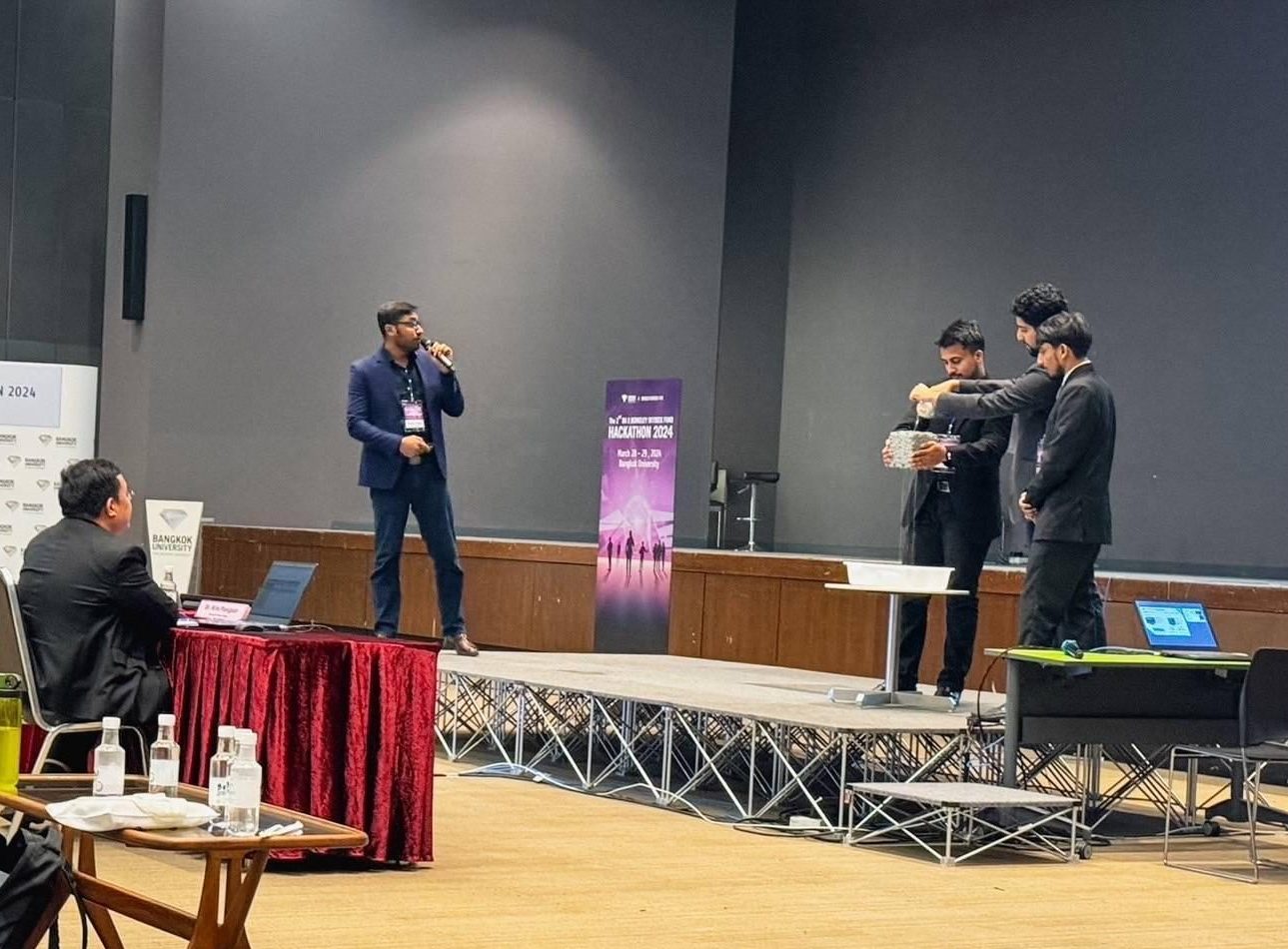A project at the Asian Institute of Technology (AIT), however, has the
potential to emerge as a boon in disaster situations. An emergency
water supply system devised at AIT could be an ideal solution in such
cases. The simple yet effective device does not need electricity and is
hand operated. Moreover, it is portable, which makes it possible for it
to be used in disaster areas.
A presentation on this project won an AIT researcher, Mr. Amila
Abeynayaka, the award for “Asian Young Professional on Water Research”
at the Eighth International Symposium on Southeast Asian Water
Environment held on 24-26 October, 2010 at Phuket in Thailand.
Live demonstrations of this project have been organized at various
places with water from the Chao Praya River and other sources being
tested with satisfactory conclusions. Results have shown that the hand
operated system satisfies the chemical, physical and most of the
biological water quality parameters of drinking water.
These results also formed a part of a research paper jointly presented
by Mr. Amila Abeynayaka, Ms. Thuy Nguyen, Prof. Chettiyappan
Visvanathan and Mr. Prapan Ariyamethee at the same conference at
Phuket. The need for such a system is most felt in disaster situations.
“In 2008, 137 natural disasters and 174
anthropogenic disasters were reported while Asia suffered the most in
terms of the number of lives lost,” says Prof. Visvanathan who has
steering the project. He adds that onsite water treatment is a solution
that is being increasingly considered as a strategy to cope with
disasters.
The AIT project, which was financially supported for the participation
of the conference by the Research and Development for Water Reuse
Technology in Tropical Regions (WateR-InTro), and supported by Japan
Science and Technology Agency (JST) and Japan International Cooperation
Agency (JICA), is unique because it is hand operated and does not
require any electricity to run the system.
Elaborating on the project, Mr. Amila reveals that the system is a
membrane based potable water treatment unit. Microfiltration is a low
pressure membrane filtration process that is now being increasingly
considered for treatment of water. The portable water system has been
operated within a selected community and feedback has been obtained to
prepare a proper operational and maintenance manual for the unit. “The
system is capable of producing 350-380 liters of potable water per day
which is sufficient to supply drinking water for a small community of
50-80 people, “ says Amila.
A survey was also conducted where people were asked to operate the
system. The participant survey revealed that most people felt that the
hand pump driven system was easy to operate even if one did not possess
any prior experience of using a hand pump. Further the hand driven pump
could be easily operated by females and children though some
difficulties were experienced by elderly in operating the system.
One of the biggest assets of the system is that apart from being
portable and easy to operate, it is also chemical free and carbon
neutral. According to Prof. Visvanathan, the project is now moving
towards further improvements. Among others, a bicycle driven pump as
well as virus removal are options that are being considered to further
enhance the utility of the system.








